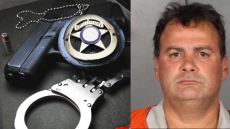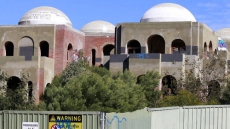ATLANTIC CITY, N.J. — Thomas Trapp sells new Harley-Davidson motorcycles in Germany, but for the next two weeks he'll be riding 3,300 miles coast to coast in the United States, aboard one made 102 years ago.
He's one of about 100 riders set to straddle century-old machines as part of the Motorcycle Cannonball, a biennial run for vintage motorcycles starting from Atlantic City on Saturday.
"There's nothing else like this ride," said Trapp, of Frankfurt, Germany, who will be joined on the run to Carlsbad, California, near San Diego, by his son, Eric, who will ride a 1916 Harley. "It's a special experience. People come from all over the world. We're like brothers and sisters, with everybody helping each other."
This marks the fourth Motorcycle Cannonball race since 2010. The first ride required pre-1915 cycles; in 2012 the cutoff was 1929, while the 2014 ride called for pre-1936 cycles.
Century-old machines are not only hard to find but are extremely expensive to buy, regardless of condition, said Keith Kizer, executive director of the Antique Motorcycle Club of America. They can cost as much as $250,000, he said, and there will be at least two perfectly restored machines on this year's ride.
While throughout the year the bikes are basically museum pieces, for the next two weeks each of the 100 teams will travel the country with a rider, crew and a truck and trailer. The winner gets a trophy and bragging rights, but the riders say the camaraderie among vintage motorcycle enthusiasts is just as big a reason to ride.
Bob Wooldridge and Bill Kurtz, of Marietta, Georgia, worked for a year to bring their 1913 Sears Dreadnought up to speed.
"It's time consuming," Wooldridge said. "We have to make a lot of the parts ourselves because you can't find them anymore."
The pair, who will share driving duties, replaced everything on the bike except the engine, the original of which is required for the bike to be used in the race.
Many competitors bought their machines just for the Cannonball. Kevin Waters, of Norfolk, England, bought a 1915 Sunbeam two years ago for $17,000 after competing in the 2014 run from Daytona Beach, Florida, to Tacoma, Washington, on a 1931 Sunbeam.
"They're known for their high-quality machines," he said. "But I stripped it down and did a major rebuild. ... The 1915 cycle is more difficult to care for because the technology changed so much in 16 years."
Riders and their crews do their own mechanical repairs, often at nightly hotel stops.
"Some are minor and can be fixed on the side of the road. Some have quite a major repair that requires heroic efforts that may take several days," said Bill Wood, editor of Antique Motorcycle Club of America magazine.
He said the challenge of riding a 100 year-old motorcycle coast to coast is remarkable. Endurance on a single or twin cylinder motorcycle is difficult, especially on uphill stretches of road. Even while running as fast as they can, most of the bikes will still travel below posted speed limits.
The riders will mostly stick to two-lane back roads, with less than 100 miles of the trip done on interstate highways.
"Even when these were new, roads were primitive at that time," Wood said. "Few made it across the country. Some were experimental, a first effort to build something motorized as transport for people. They were literally learning how to make a motorcycle."





